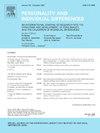特征变异是性别差距的部分原因
IF 3.5
2区 心理学
Q1 PSYCHOLOGY, SOCIAL
引用次数: 0
摘要
当结果是由特质或协变量引起时,平均结果中的性别差距可能仅由特质差异引起。因此,如果一个群体在认知能力、个性特征、攻击性或风险偏好等特质方面的变异性更大,即使没有歧视和平均特质差异,也可能会出现工资、专利注册、STEM 学位和监禁率等结果的平均性别差异。由于男性和女性的特质可变性可能不同,男性通常表现出更大的可变性,因此性别差距的这一渠道值得深入探讨。本研究通过分析和举例,建立了一个正式的框架,以证明将特质映射到结果的函数的凸性或凹性如何在决定结果的平均性别差距中发挥关键作用。当特质分布是对称和单模态分布(如正态分布)时,这些结果是成立的。一个模拟练习展示了流行的统计分解方法(如回归分析)如何可能对性别差异及其来源产生误导性结论。总体而言,社会结果中的性别差距是复杂的,并取决于具体情况,男性特质的更大变异性可能是一个重要因素。本文章由计算机程序翻译,如有差异,请以英文原文为准。
Trait variability as a partial explanation of gender gaps
When an outcome is caused by a trait or covariate, gender gaps in average outcomes can arise solely from differences in trait variance. Thus, average gender disparities in outcomes such as wages, patent registrations, STEM degrees, and imprisonment rates may emerge if one group is more variable in traits such as cognitive ability, personality traits, aggression, or risk preferences, even in the absence of discrimination and mean trait differences. As the variability of traits can differ between males and females, with males most often exhibiting greater variability, this channel of gender gaps warrants thorough exploration. This study develops a formal framework, using analysis and examples, to demonstrate how the convexity or concavity of the function mapping traits to outcomes plays a critical role in determining average gender gaps in outcomes. These results hold when the trait distribution is symmetric and unimodal, such as the normal distribution. A simulation exercise demonstrates how popular statistical decomposition methods, such as regression analysis, may produce misleading conclusions about gender disparities and their sources. Overall, gender gaps in social outcomes are complex and context-dependent, and greater male variability in traits may be a significant contributing factor.
求助全文
通过发布文献求助,成功后即可免费获取论文全文。
去求助
来源期刊

Personality and Individual Differences
PSYCHOLOGY, SOCIAL-
CiteScore
8.50
自引率
4.70%
发文量
577
审稿时长
41 days
期刊介绍:
Personality and Individual Differences is devoted to the publication of articles (experimental, theoretical, review) which aim to integrate as far as possible the major factors of personality with empirical paradigms from experimental, physiological, animal, clinical, educational, criminological or industrial psychology or to seek an explanation for the causes and major determinants of individual differences in concepts derived from these disciplines. The editors are concerned with both genetic and environmental causes, and they are particularly interested in possible interaction effects.
 求助内容:
求助内容: 应助结果提醒方式:
应助结果提醒方式:


